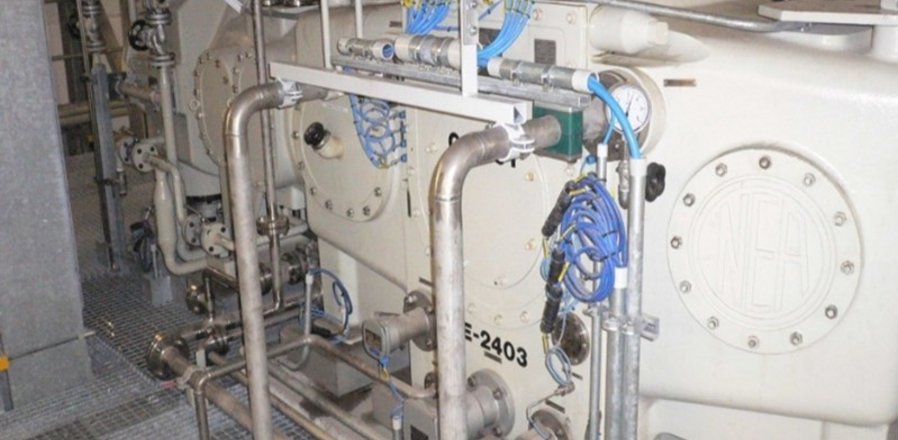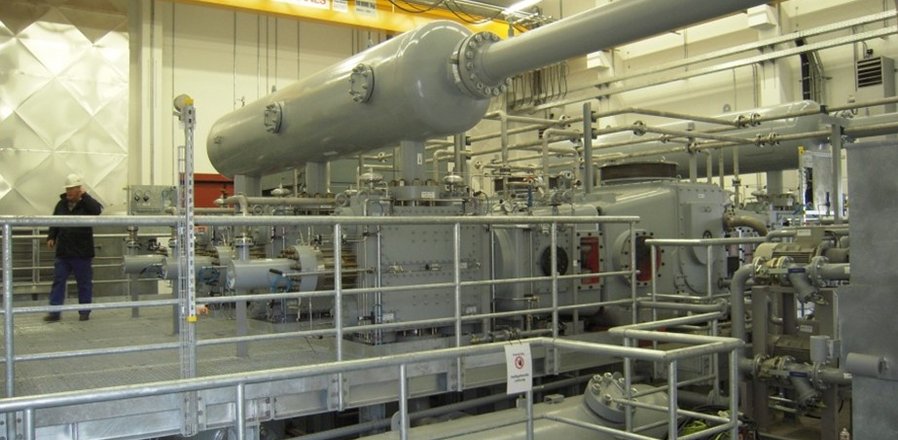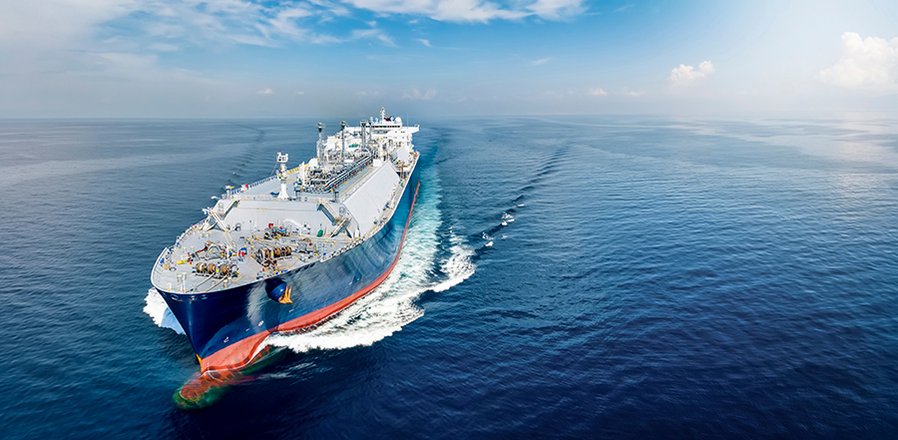
The upstream sector involves exploration and extraction of crude oil and natural gas. Searching at onshore underground or subsea for oil and gas reservoirs is the initial step to locate potential raw material sources. For offshore exploration seismic vessels are utilized. We supply SAPS (Seismic Air Pressure Systems) as container sized pressure built up units to send air pressure waves for researching.
After locating wells and/or reservoirs, our wellhead compressors are part of the operation to recover and bring natural gas to surface and transmit to further gas processing plants. Typical compressor packages are horizontal high-speed frames either with gas engine or electric driver.

In case subsoil or subsea reservoirs are operating for a longtime the amount of oil/gas depletion starts reducing output. This will be elongated via Enhanced Oil Recovery (EOR). The most frequently used EOR method is gas injection. Beside natural gas CO2 is the most used gas for injection. We have long experience in CO2 compression even for supercritical high-pressure applications. For EOR we have developed a combined compressor package with a low-pressure screw and high-pressure piston compressor driven by dual shaft gas engine. This solution has the benefit of optimized plot space and lower energy consumption.
In gas processing plants raw natural gas treatment is performed to remove solids, hydrogen sulfide, carbon dioxide and heavier hydrocarbons forming condensates to achieve pipeline dry gas quality. Natural gas containing hydrogen sulfides is called sour gas and without H2S it is named sweet gas. We have long experience also in the compression of H2S heavy sour gases.
Submitted to grid natural gas is then transported as sales gas into pipeline systems for intermediate storage and for selling to further production plants, power plants, fertilizer plants or as domestic fuel. Other products generated via gas processing plants are ethane, propane, butane and NGLs (Natural Gas Liquids).
As part of the transportation system, pipeline compressors are used for long distance natural gas supply systems to overcome pressure losses and reaccelerate the gas volumes over thousands of kilometers along the supply routes. Since pressure difference and demand of transported volumes can vary frequently and in terms of quantity, our piston compressor having sophisticated capacity control systems are the appropriate choice to handle these needs very economically and efficiently. We have developed und successfully employed several gas-engine driven high speed compressors (HS) into the midstream market. Their speed is, as per the corresponding gas engine selection, between 750 and 1800 RPM. The HS compressors are fully integrated into our market leading KO3 compressor sytem design software.

Different storage systems are occupied for collecting natural gas under different geological formations and surroundings. Underground salt caverns or aquifer storage volumes are spread all over Europe and the US; to feed gas into these volumes our piston compressors are installed at operational storage hubs.
Typical applications are horizontal compressors for flows of up to 200.000 Nm³/h. Suction pressure can vary between 20 and 60 bar and discharge pressures vary between 80 and 230 bar depending on the availability of pipeline volumes and pressures and on the filling level of the gas storage either caverns, aquifer or piping systems. To cover all these operation scenarios those units, having driver power of up to 10 MW are equipped with either VSD systems and or stepless valve unloading systems.
Many industrial applications call for large quantities of hydrogen. H2 can be obtained by reforming natural gas or higher hydrocarbons. Feedstock natural gas is enriched with hydrogen, desulphurized and then mixed with steam. The result of the water shift reaction is a stream of H2 and CO2 with an average mass relation of around 10 kg of CO2 for 1 kg of H2.
To reduce naturally occurring sulfur content in natural gas and the distilled crude oil phases, desulfurization must be carried out in a hydro finer during distillation (liquid gas, petrol, diesel fuel, heating oil).
The distillate is mixed with hydrogen, heated, and then routed to a reactor filled with catalyst. This produces hydrogen sulfide. The cleaned product plus the remaining hydrogen and the hydrogen sulfide are separated repeatedly. We have numerous references for desulfurization applications for make-up and recycle hydrogen and hydrogen rich gas compressors installed in hydro cracking plants.
Using Pressure Swing Adsorption (PSA), virtually complete recovery of pure hydrogen is possible from hydrogen rich process gases such as those occurring for example in the refinery process, in petrochemical and chemical processes and in iron and steel industry. Plants used to recover hydrogen from purge gas, supply it to industrial processes for generating synthesis gas or production of ammonia.
For PSA units our compressors based on API 618 specification are built as vertical units in the low-pressure range up to 40 bar and around 2 MW drive power.
To feed the hydrocracking process with fresh hydrogen from the steam reformer typically flow rates 50-100,000 Nm3/h need to be compressed from around 10-20 to 150-200 bar. This is typically done with three-stage API 618 machines with more than 10 MW drive power. The hydrogen in the hydrocracking reactor cracks the long-chained hydrocarbons into shorter chain lengths required for fuel production.
The petroleum and petrochemical industries use CCR platforming process to produce aromatics from naphtha and paraffins finally used in motor fuels or other specific aromatic compounds. Main component in the process are reactor and recovery section. Hydrogen rich gas needs to be compressed and charged into product recovery section via net gas compressor. We supply those units typically build as horizontal API 618 frames out of process gas portfolios 1 stage units, 50.000 Nm³/h, 2.5 MW drive power.

We are also active in marine propulsion system based on LNG, LPG, Ammonia or other fuels. The marine-rated vertical and V-type compressors in our portfolio, based on robust API 618 designs, can be used for the full range of marine propulsion and BOG treatment and re-liquefaction applications.
For the propulsion and on-board power generation systems, depending on the engine concept, typical pressures needed are 10-20 bar for four-stroke engines and 150 to above 300 bar for two-stroke concepts. Using an excellent controllability of the contact ring-type piston compressors also combinations with screw compressors from partner companies are possible if the suction pressure is very low.
Reliquefication of the boil-off gas is mostly used on bigger bunkering vessels and on large LNG carriers, when the BOG flow exceeds the propulsion and power generation engines demand. This can be either done by side streaming a part of the fuel gas compressor flow or by employing a dedicated system.